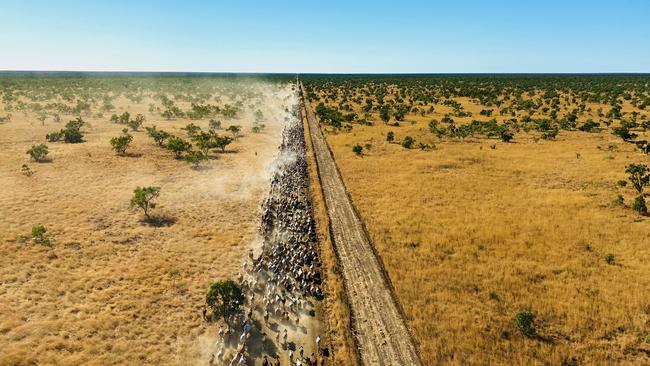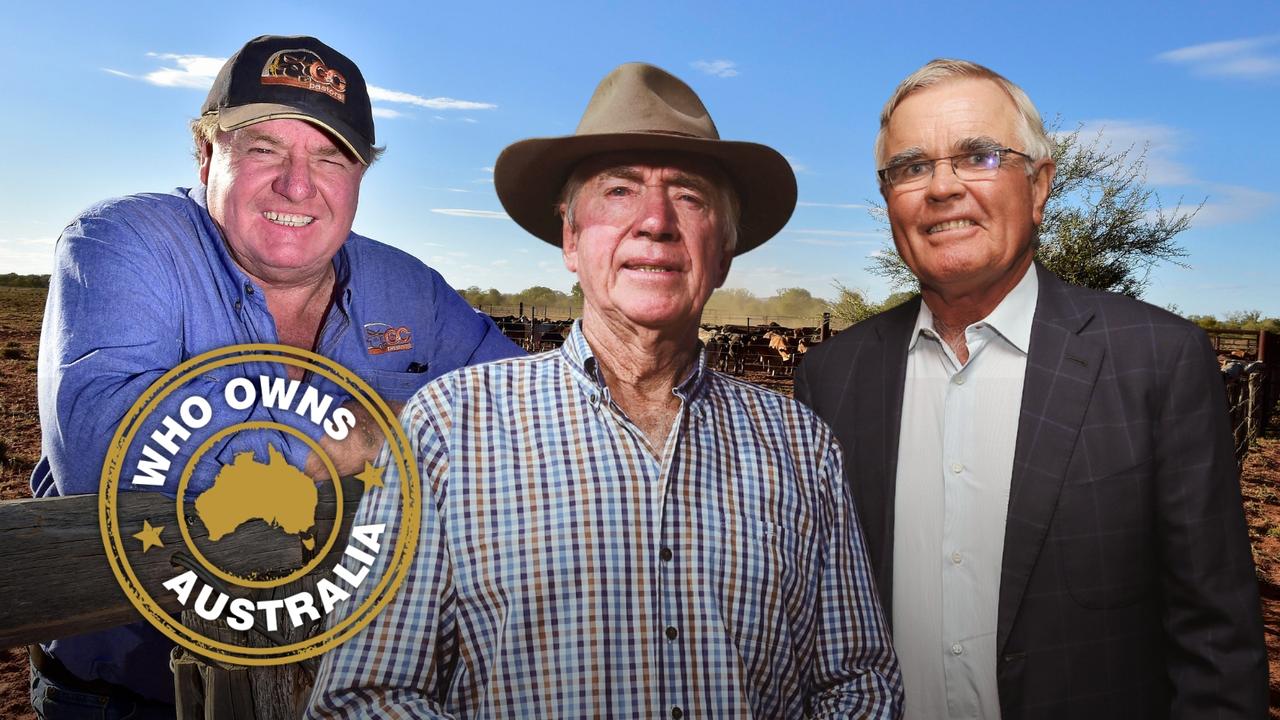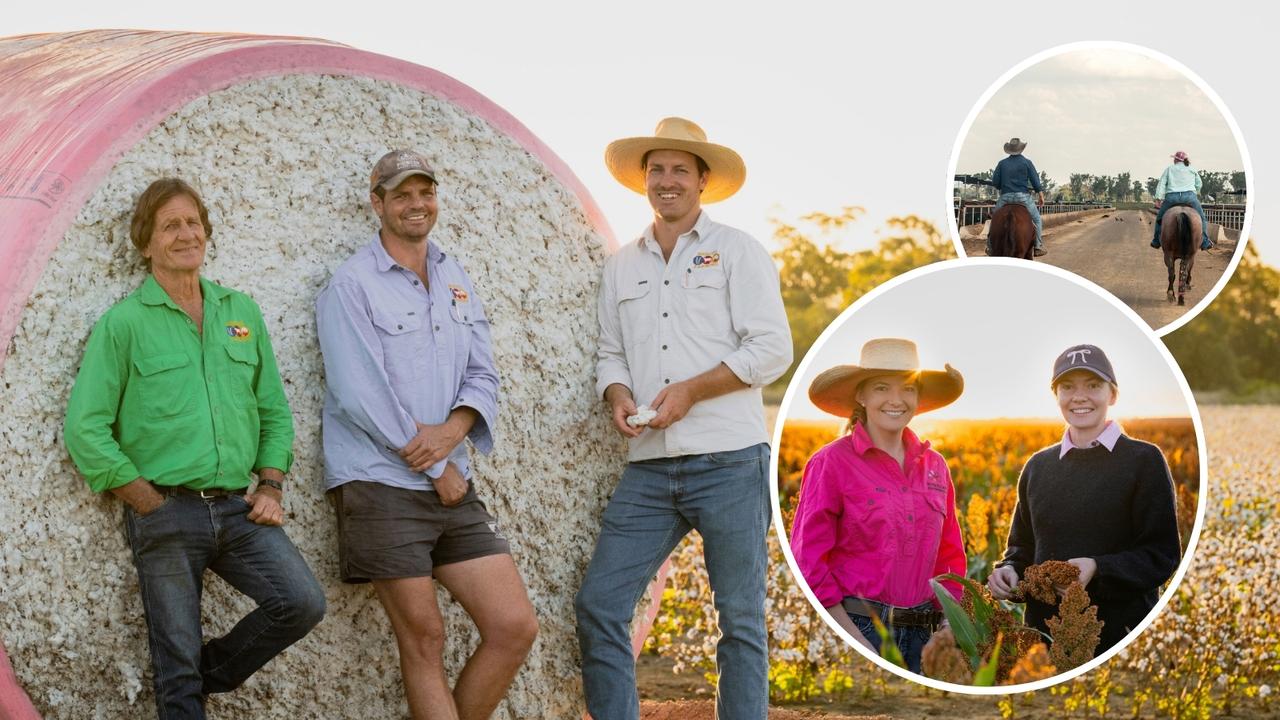Gundaline Station, Cherylton farms, Macadamias Australia: Foreign investors swoop on Aussie farms
Aussie farmland is expected to capture the attention of more foreign investors as demand for rural property remains strong.
A surge of foreign capital and investment is headed for Australian shores with rising interest rates changing the buyer dynamic for farmland across the nation.
For the better part of three years, record low cost of borrowing, strong commodity prices and productive seasonal conditions enabled Australian farming families to generally become the primary player in the rural property market.
However with interest rates climbing at the fastest rate in decades and commodity prices softening slightly, foreign-backed investors are poised to enter Australia’s rural property market with renewed momentum.
Colliers head of agribusiness, transaction services Rawdon Briggs says the mix of buyers for Australian farms is shifting.
“On the demand-side there is a changing pattern of behaviour. For a number of years domestic bidders have been the strongest in the market,” Briggs says. “Previously the ratio was about 80:20 in favour of the amount of domestic bidders looking at a property, but today we are seeing it closer to 50:50.”
Briggs, who is selling the one million-hectare Beetaloo Aggregation cattle station in the Northern Territory, on behalf of Australian retail billionaire Brett Blundy and his business partners Jane and Scotty Armstrong, for more than $300 million, expects a number of major farmland sales this year to be completed by institutional investors.

“It is a very good market and I think as the year goes on there is the potential for some significant sales above $200, $300 and $400 million,” he says. “They (foreign-backed investors) might not be affected at all by rising interest rates because they are 100 per cent equity buyers. So interest rates don’t move the dial for them. It might affect them on a cashflow basis, but not on a cost of acquisition basis.
“Buyers of properties valued at sub-$20 million – the more typical ‘buying the neighbour’s farm’ type of deal – are going to be affected more by increasing interest rates.”
International institutional investors have already completed several major deals this year.
In January, Dutch agricultural investors offloaded one of Australia’s largest irrigated farms, the 14,916ha Gundaline Station, in a deal with a Chinese textile company.
Smart Shirts Ltd acquired the property for about $120 million and plans to grow cotton for its own textile manufacturing.
Earlier this year, Victorian-based Excel Farms, backed by Canada’s Fiera Comox Partners, paid more than $100 million to purchase the 8554ha Cherylton Farms near Kojonup in Western Australia’s Great Southern Region.
Excel Farms is operated by Nick Paterson, the son of prominent Western District landholders and ACE Radio owners Rowly and Judy Paterson.

Meanwhile Canada’s PSP Investments via its Stahmann Webster subsidiary paid $100 million-plus for the majority of the Steinhardt family’s Macadamias Australia enterprise at Bundaberg in Queensland.
Briggs says prospective foreign buyers of rural property are showing the most interest in horticultural, beef, cattle and cropping farmland, such as cotton.
Elders Real Estate farmland agency and agribusiness investments general manager Mark Barber says rural property prices are holding firm thanks to tight supply and competing demand from the corporate and family farming sectors.
“I would still describe interest as strong. This is partly due to limited supply increasing competition for the land that does come onto the market,” Barber says. “Long-term confidence in the sector is high. There is some caution in some sectors but this does not appear to be translating into softer property prices.”
Barber says domestic buyers are still relatively well-positioned despite rising interest rates.
“High interest rates are a product of inflation. For institutional buyers, agricultural land is seen as an inflation hedge,” Barber says. “For domestic buyers, I have not seen significant impacts on demand from interest rates.
“It is worth remembering that many of the buyers active in the market have seen much high interest rates over their lifetime, so current levels are manageable.”
For example, Mark Menegazzo late last year sold the 1.1 million-hectare Gulf Coast Agricultural Co, located near the Gulf of Carpentaria, to major NSW cotton growers Peter and Jane Harris in a deal reportedly worth about $380 million.
There was also more than $200 million worth of South Australian farm sales completed involving predominantly local buyers including the Handbury family, who sold their six-farm Saltbush Ag portfolio to five different families for more than $33 million.

The Handburys also paid a district record $22 million through auction to secure the 630ha Binbrook farm at Lucindale, in southeast South Australia.
BIGGEST FARM SALES
GULF COAST AGRICULTURAL CO, YAGOONYA, QLD (1.1 MILLION HA)
$380 MILLION
PLUMTHORPE AGGREGATION, BARRABA, NSW (11,300HA)
$124 MILLION-PLUS
GUNDALINE STATION, CARRATHOOL, NSW (14,916HA)
$120 MILLION
CHERYLTON FARMS, KOJONUP, WA (8554HA)
$100 MILLION-PLUS
MACADAMIAS AUSTRALIA, BUNDABERG, QLD (1000HA)
$100 MILLION-PLUS
VAUCLUSE ESTATE, CONARA, TAS (4448HA)
$100 MILLION-PLUS
BIGGEST FARMS FOR SALE
BEETALOO STATION, ELLIOTT, NT (1,054,700HA)
$300 MILLION-PLUS
PACKHORSE PASTORAL PORTFOLIO, NORTHERN NSW AND SOUTHERN QLD (27,124HA)
$120 MILLION
JEMALONG STATION, FORBES, NSW (13,498HA)
$85 MILLION-PLUS
WONGA PARK, BOOSEY, VIC, (1088HA)
$40 MILLION
GREEN PARK AGGREGATION, RAND, NSW (2867HA)
$35 MILLION-PLUS





